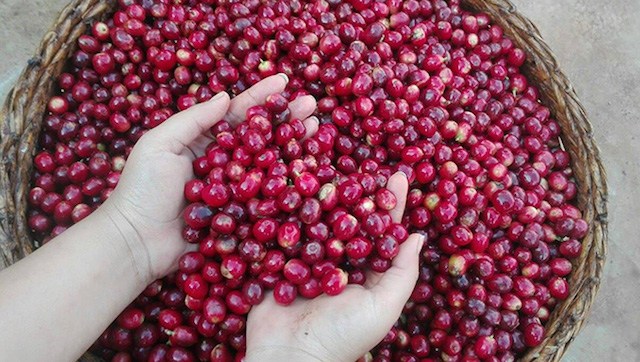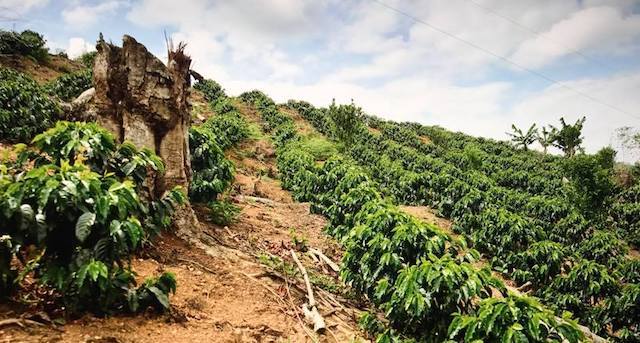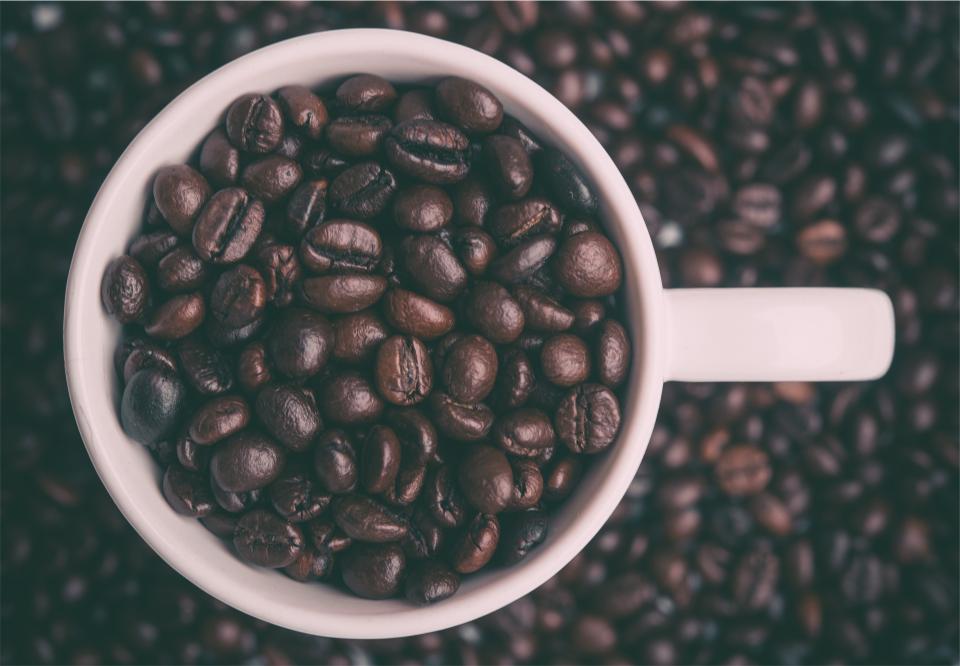Coffee lovers must know some common sense about the origin, tree species and name of coffee.
For professional baristas, please follow the coffee workshop (Wechat official account cafe_style)
Many coffee lovers have their own views on which latte tastes good and the flowers look good, but when it comes to individual coffee, they have no choice but to stare at Kenya, Yega Xuefei and Rosa. When it comes to whether they are from the same kind of coffee tree, and what is the relationship between the origin and the tree species, it is even more confusing.

To be honest, as a coffee lover, it is necessary to know some basic coffee knowledge.
Is the individual coffee made from the same kind of coffee tree?
The so-called individual coffee generally only refers to coffee from a single producing area (manor, cooperative, or a larger special producing area). It is true that it often comes from certain tree species, because the environment in the same area is similar, and coffee farmers often choose several varieties of the same kind, but this is not absolute.
Take the Yegashafi producing area, for example, which is a well-known large producing area in Ethiopia in Africa (Sidamo, Lim, etc.). There are 24 coffee cooperatives, each of which is made up of small coffee farmers. this is because the equipment needed to handle coffee beans is often beyond the affordability of individual small farmers. But in the same cooperative, coffee does not necessarily come from the same tree species. For example, Beloya, a cooperative, exports coffee beans from several unknown varieties (harvested in the wild) as well as several locally grown native species. So unless the raw beans are exported with a specific tree species (or species) marked by "Yega Chuefei, Beloya", you have no idea what tree species the beans are harvested from.
In addition, such as the "Kenya AA" exported by some Kenyan cooperatives, the more advanced ones will be marked as a mixture of two famous varieties, SL28 and SL34 (but the proportion of the mixture is usually not marked). It is almost impossible to get a single variety of SL28 (the best quality variety) beans in recent years. Moreover, if the exporter does not provide documentation, the beans marked "Kenya AA" may come from the infamous Ruiru 11.
As for super-producing countries like Colombia (second or third in the world in terms of production, separated from Vietnam), there are many producing areas and individual coffee farms, and their tree species, in addition to the traditional Typica and the Colombian species successfully bred by themselves (inferior in evaluation to them), have also introduced many other varieties, such as Geisha, Pacamara and so on. Fortunately, most of the boutique coffee produced by a single estate is exported with a label on the variety of coffee.

Second, is there any relationship between the origin and the tree species?
The answer to this question is: of course it is! Different geographical conditions and microclimate will have different effects on different tree species. Let me give you three famous examples for your reference.
Kenya's national treasure tree SL28, many coffee-producing countries have introduced their own countries to grow, but the results are not ideal, because this tree has excellent ability to absorb "phosphorus", and Kenya's soil naturally contains a high concentration of phosphorus, thus creating the unique acid taste of SL28, which comes from inorganic acid (phosphoric acid). (generally, the sour taste of coffee comes mostly from organic acids, such as chlorogenic acid, acetic acid, lactic acid, etc.), if other countries grow SL28 It is necessary to add a large amount of phosphate fertilizer, which increases the cost, reduces the economic value and, of course, reduces the willingness of farmers to plant.
Panamanian Emerald Manor is famous for its Geisha, which was actually discovered in Ethiopia in 1931 and introduced to Costa Rica in the 1960s. At that time, many coffee-producing countries in Central America were introduced back to grow it, but why was it delayed until 1998 when Daniel of the Peterson family of the Jade Manor saw its potential? One of the big reasons is that this variety must be planted in the right place in order to have excellent performance.
This reminds me of a similar example of wine: it is recognized all over the world that the two best vines used to make red wine are Cabernet Sauvignon and Pinot Noir. Interestingly, the former can produce excellent wine grapes in many different places in the world, while the latter can produce good results only in a few parts of Burgundy, France. Without Burgundy, almost all of them are mediocre. This is precisely because of the special soil of Burgundy.
The Incht Manor in Guatemala divides their coffee growing area into several areas, planting different coffee trees according to different geographical conditions and microclimate. For example, some areas only grow Pacamara, some only Mokka, some only Bourbon and so on.
Important Notice :
前街咖啡 FrontStreet Coffee has moved to new addredd:
FrontStreet Coffee Address: 315,Donghua East Road,GuangZhou
Tel:020 38364473
- Prev

Coffee decryption | whether there is more caffeine in deep roasting or light roasting
Professional barista Communication Please pay attention to the Coffee Workshop (Wechat official account cafe_style) Coffee is almost an indispensable companion in the morning for modern people, without caffeine, the body doesn't seem to be in sober mode yet. But which kind of coffee bean has more caffeine? Let's take a look at the Tasting Table report. Anyone, whether it's going through a sleepless night
- Next

Is instant coffee really the next choice for coffee lovers?
For professional baristas, please follow the coffee workshop (official Wechat account cafe_style). Many people think that for coffee lovers, instant coffee is the next thing.
Related
- Beginners will see the "Coffee pull flower" guide!
- What is the difference between ice blog purified milk and ordinary milk coffee?
- Why is the Philippines the largest producer of crops in Liberia?
- For coffee extraction, should the fine powder be retained?
- How does extracted espresso fill pressed powder? How much strength does it take to press the powder?
- How to make jasmine cold extract coffee? Is the jasmine + latte good?
- Will this little toy really make the coffee taste better? How does Lily Drip affect coffee extraction?
- Will the action of slapping the filter cup also affect coffee extraction?
- What's the difference between powder-to-water ratio and powder-to-liquid ratio?
- What is the Ethiopian local species? What does it have to do with Heirloom native species?

